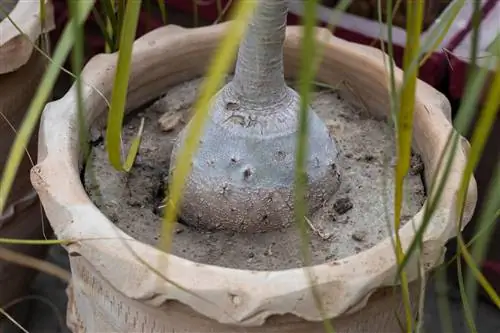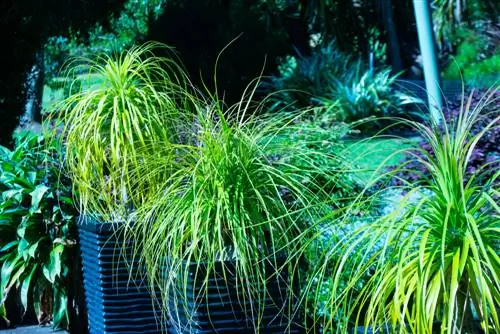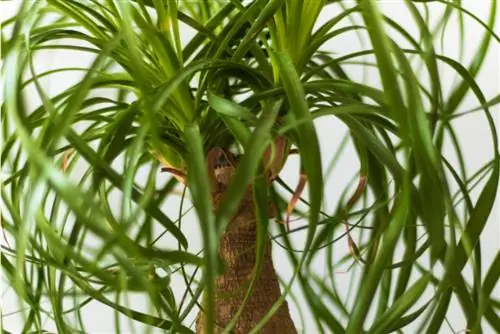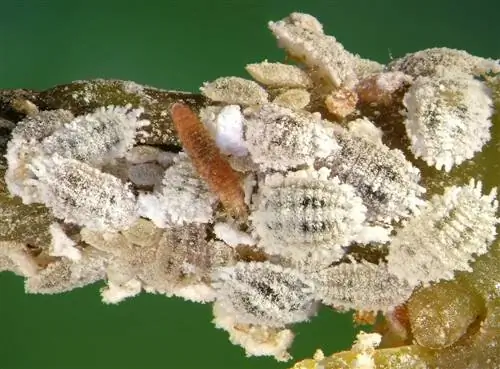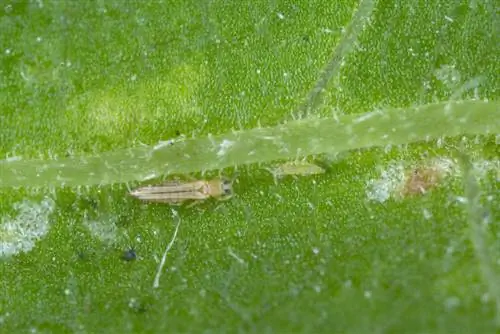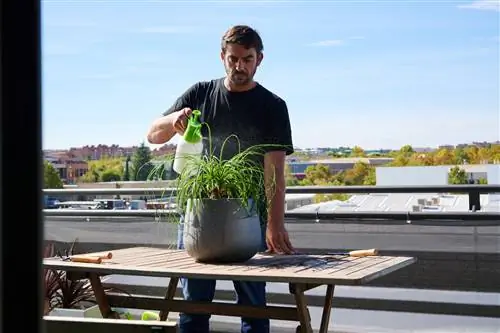- Author admin [email protected].
- Public 2023-12-16 16:46.
- Last modified 2025-01-23 11:22.
If thrips attack the elephant's foot, you should take action. Since the pests suck out the plant sap, the houseplant can die. Read here how to recognize and biologically combat thrips on elephant feet. Effective prevention measures at a glance.
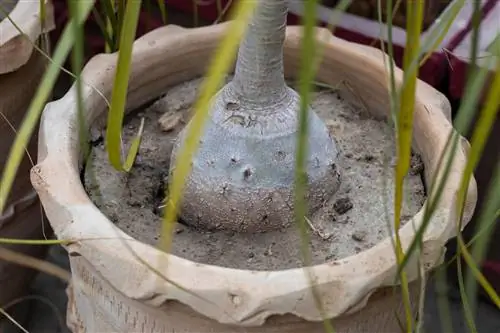
How to combat thrips on elephant foot?
Thrips on elephant foot can be combated byShoweringwith soapy water. Dabbing with neem oil is an effective remedy against the larvae. Thrips infestation can be recognized bysilvery-white mottling, fecal pellets and stunted growth. Preventive measures include high humidity and spraying with a neem oil-water mixture.
How do you recognize thrips on the elephant foot houseplant?
Thrips are1 to 3 mm small thrips (Thysanoptera) with an elongated, dark brown body and distinctive mouthparts. Thrips larvae are up to 4 mm long, translucent light green, wingless and pupate in the substrate. On the elephant's foot, the pests mainly sit on the undersides of the leaves and suck on the plant sap. These signs indicate a thrips infestation:
- Silvery-white sucking spots on the leaves.
- Brown poop balls
- Stunted growth.
- Little bright animals in the potting soil.
- Numerous storm animals are stuck to a blue board on the elephant's foot.
What can you do against thrips on elephant foot?
The best method of combating thrips on elephant foot isShowering with soapy water. Beforehand, pack the root ball in a plastic bag. To reach all the bubble feet, it is best to shower the treetop upside down. Repeat the treatment every two to three days for several weeks. You can make soapy water yourself using 8 grams of soft soap and 0.5 liters of water.
TheDabbing with neem oil helps against thrips larvae. The active ingredient azadirachtin is a deadly poison for the larvae upon direct contact.
How can you prevent thrips infestation on elephant feet?
An effective prevention against thrips on elephant foot is regularsprayingwith aneem oil-water mixture Add 4 ml of neem oil to 1 liter lime-free water. To mix the neem oil and water, add 1 ml of Rimulgan as an emulsifier. Spray the tops and bottoms of the leaves on the elephant's foot with this solution every four weeks.
Thrips don't like moisture
Between treatments with neem solution, spray the elephant's foot weekly with rainwater. Fill the coaster with expanded clay and water to increase the local humidity.
Tip
Repotting elephant foot with thrips infestation
Fighting thrips on elephant's foot is only successful if you change the substrate. The transformation of the larvae into winged bladder feet takes place in the soil. That's why you should repot an elephant's foot while you're dealing with adult fringe-winged beetles. Otherwise a new generation of thrips will develop in the root ball and infect the Beaucarnea recurvata again.

